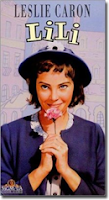This article was written by José M. Aguilar in Spanish on his excellent blog Variable Not Found, and was translated, edited and republished here by Timm Martin (and Google Translator) with permission from Mr. Aguilar.
 I’ve been using emoticons often since I discovered them back in the day when Fidonet dominated the world of digital communications. And in spite of their everyday use, I haven’t given them much attention. However, when I searched for some information about emoticons, I found some curiosities that I think are worth knowing.
I’ve been using emoticons often since I discovered them back in the day when Fidonet dominated the world of digital communications. And in spite of their everyday use, I haven’t given them much attention. However, when I searched for some information about emoticons, I found some curiosities that I think are worth knowing.
1. About the Term “Emoticon”
The term emoticon is a portmanteau, a fusion of “emotion” + “icon,” a clear reference to an icon that represents emotions. It was introduced by David W. Sanderson in his book “Smileys” published in 1993, years after emoticons became popular.
 Although “emoticon” is often used as a synonym of “smiley,” strictly speaking it is not the same. A smiley is a schematic representation of a smiley face, whereas only some emoticons represent happiness. The typical yellow round smiley-face, created by designer Harvey Ball in 1963, inspired the simplistic representation of graphic emoticons we know today.
Although “emoticon” is often used as a synonym of “smiley,” strictly speaking it is not the same. A smiley is a schematic representation of a smiley face, whereas only some emoticons represent happiness. The typical yellow round smiley-face, created by designer Harvey Ball in 1963, inspired the simplistic representation of graphic emoticons we know today.
The 22nd edition of the Dictionary of the Spanish Royal Academy in 2001 defined the term smiley as:
“Graphic symbol that is used in communications via email and serves to express the mood of the sender.”
Reading further in the definition, however, you can see that it has been amended, and the next edition will be more in tune with reality:
“Representation of a facial expression that is used in electronic messages to refer to the mood of the sender.”
Today the accepted term is emoticon (emoticons plural), so it seems that “smiley” can be removed from future editions of the dictionary.
2. Historical Background
The need to involve feelings and emotions in written text existed long before the creation of emoticons and the emergence of computer networks. In fact, there are known previous occurrences of similar concepts, though tailored to the medium of that time.
For example, in April 1857 the numerical code “73” was added to a Morse code message to indicate an affectionate “love and kisses,” which later became formalized as “best regards.” And in the early twentieth century, some people signed letters with “88” to indicate “with love.”
![]() Although this technique conveyed emotion in messages, it wasn’t until March 1881 when Puck, a satirical magazine of great success at the time, first used graphics to link emotions to the text.
Although this technique conveyed emotion in messages, it wasn’t until March 1881 when Puck, a satirical magazine of great success at the time, first used graphics to link emotions to the text.
 Somewhat later in 1912, journalist and writer Ambrose Bierce suggested improving a story by using a new symbol that appeared like a U or parenthesis lying flat, to indicate smiling lips at a funny or ironic phrase.
Somewhat later in 1912, journalist and writer Ambrose Bierce suggested improving a story by using a new symbol that appeared like a U or parenthesis lying flat, to indicate smiling lips at a funny or ironic phrase.
Vladimir Nabovok, a Russian writer famous for his novel Lolita, reiterated the need for a special smiley symbol in an interview with the New York Times in April 1969, when he was responding to a question about his value compared to other writers of his era:
I often think there should exist a special typographical sign for a smile — some sort of concave mark, a supine round bracket, which I would now like to trace in reply to your question.
 On March 10, 1953, in an announcement for the new film Lili in the New York Herald Tribune, two of the best-known emoticons appeared in print for the first time:
On March 10, 1953, in an announcement for the new film Lili in the New York Herald Tribune, two of the best-known emoticons appeared in print for the first time:
Today You’ll laugh 🙂 You’ll cry 🙁
You’ll love <3 ‘Lili’
![]() In the 1960’s and 70’s, users of the PLATO system — considered one of the first virtual communities — designed icons based on several superimposed characters. For example, as shown in the illustration, by overlaying the characters V, I, C, T, O, R and Y on the same position, it was possible to obtain a figure which could easily recognize a smiling face.
In the 1960’s and 70’s, users of the PLATO system — considered one of the first virtual communities — designed icons based on several superimposed characters. For example, as shown in the illustration, by overlaying the characters V, I, C, T, O, R and Y on the same position, it was possible to obtain a figure which could easily recognize a smiling face.
3. Origin of Emoticons in Digital Communications
In April 1979, Kevin MacKenzie suggested to subscribers of MsgGroup — one of the first mailing lists for ARPANET, the origin of the Internet — the use of a new mechanism to indicate emotions in email. Specifically, he suggested the use of the symbol -) to indicate ironic content in a message:
Perhaps we could extend the set of punctuation we use, i.e.: If I wish to indicate that a particular sentence is meant with tongue-in-cheek, I would write it so:
“Of course you know I agree with all the current administration’s policies -).”
The “-)” indicates tongue-in-cheek.
Although his proposal was not greeted with particular enthusiasm, the pioneers of communication networks began using variations of these expressions in their messages.
Later in September 1982, Scott Fahlman sent the following message to a bulletin board system for Carnegie Melon University:
19-Sep-82 11:44 Scott E Fahlman 🙂
From: Scott E FahlmanI propose the following character sequence for joke markers: 🙂
Read it sideways. Actually, it is probably more economical to mark things that are NOT jokes, given current trends. For this, use 🙁
 In his message, Fahlman proposed the use of emoticons 🙂 and 🙁 to express emotions related to a written message, and more specifically so that the reader could identify when a message should be interpreted as a joke and when not. As an interesting aside, that the original message was retrieved from old backup tapes from the college twenty years after its publication by a researcher from Microsoft, Mike Jones.
In his message, Fahlman proposed the use of emoticons 🙂 and 🙁 to express emotions related to a written message, and more specifically so that the reader could identify when a message should be interpreted as a joke and when not. As an interesting aside, that the original message was retrieved from old backup tapes from the college twenty years after its publication by a researcher from Microsoft, Mike Jones.
This time people accepted these emoticon suggestions, and from that point on, people began to use them in practice. For this reason, Fahlman is considered to be the father of emoticons as we know them today, although not everyone agrees. He himself says that he is the inventor of the smiley … or at least one of the inventors. Regardless, Fahlman was the first person to use the sequence 🙂 to indicate a joke in a digital environment.
Article published on December 4, 2008
| If you like this article, please share it: |












December 5th, 2008 at 9:32 am
[…] Забавлявам се с емотикони… Изчетох им историята…. https://www.devtopics.com/8-curiosities-that-y…ns-part-1/ в Любими преди 29 секунди edno23.com Начало контакти […]